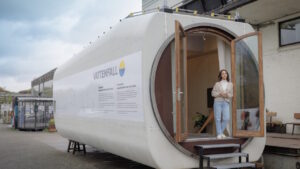The Australian Department of Defence has launched a request for tender to supply and install a renewable energy generation system to power Bathurst Island, north of Darwin.
The Northern Territory island is home to Australia’s Tiwi community, and is also a key tactical location for the country’s armed forces; during the bombing of Darwin in World War II, inhabitants of Bathurst were first to spot the incoming Japanese planes.
The island – which is mainly powered by costly and polluting diesel fuel generation – now houses a Tactical Air Defence Radar Site.

Back in the mid-1990s, a team of scientists from the Northern Territory University and the Northern Territory’s Power and Water Authority looked at the possibility of using tidal generation to power the island.
The current request for the detailed design of an “alternative power system” – potentially including wind and solar sources – followed by its supply and installation, is the latest attempt to provide a cheaper and more secure fuel source.
The new renewables system, which would need to be at least 100kW in size, is to be connected to the existing electrical distribution system, as well as the existing diesel storage system.
Any project proposal must include supporting infrastructure, inverters, power distribution equipment, batteries, generators, climate control and control systems.
Training of on-site personnel in the operation and maintenance of the new generation system would also be a requirement of any tender.
The largest settlement on Bathurst Island is Wurrumiyanga, in the south-east, with a population of around 1,450.
The closing date for tenders is January 30, 2015.










